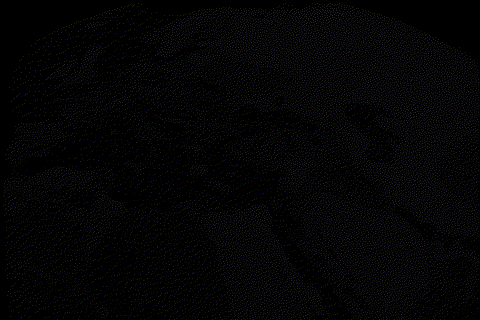In The Muppets (2011) the almost fully reunited gang, together with Jason Segel and Amy Adams, need to travel to France from the United States to find Miss Piggy. They have a car and (robot; don’t ask) driver; they discuss how they can get there from here.
Like much Muppet humor, this joke asks the viewer to have a knowledge of show business tropes, of which “travel by map” is one. Many of us will probably associate it with Indiana Jones; here’s what we see when, in Raiders of the Lost Ark, Indy leaves Marshall College (University of the Pacific in Stockton, CA in real life and apparently fictionally located in Northern California as well) to find Marian in Nepal, traveling by flying boat.

Of course, as with the Muppets, much that is in Indiana Jones is pastiche and homage, and the travel by map sequence serves the same purpose here as it did thirty years later: nudging the viewer to say see, this is like those old-timey movies. But which ones?
The best known example I can think of is Casablanca. At the beginning, the narrator tells us about the refugee trail that leads people fleeing Nazi-occupied Europe to the Vichy-controlled city. As he talks, we see their path, shifting from globe to map.

I don’t know where this trope originated but I wouldn’t be surprised to learn it came from, or became common during, the years around World War II. As Susan Schulten points out, more Americans saw more maps of more kinds because of the war. Many had never before been overseas or even had to think about it much.1
Casablanca of course dramatizes the American journey from isolation to intervention in the character arc of Rick Blaine. Maybe it’s also the first real popular instance of the geographical awareness that made that arc possible.
Footnotes
Susan Schulten, The Geographical Imagination in America, 1880-1950 (Chicago: University of Chicago Press, 2002).↩︎